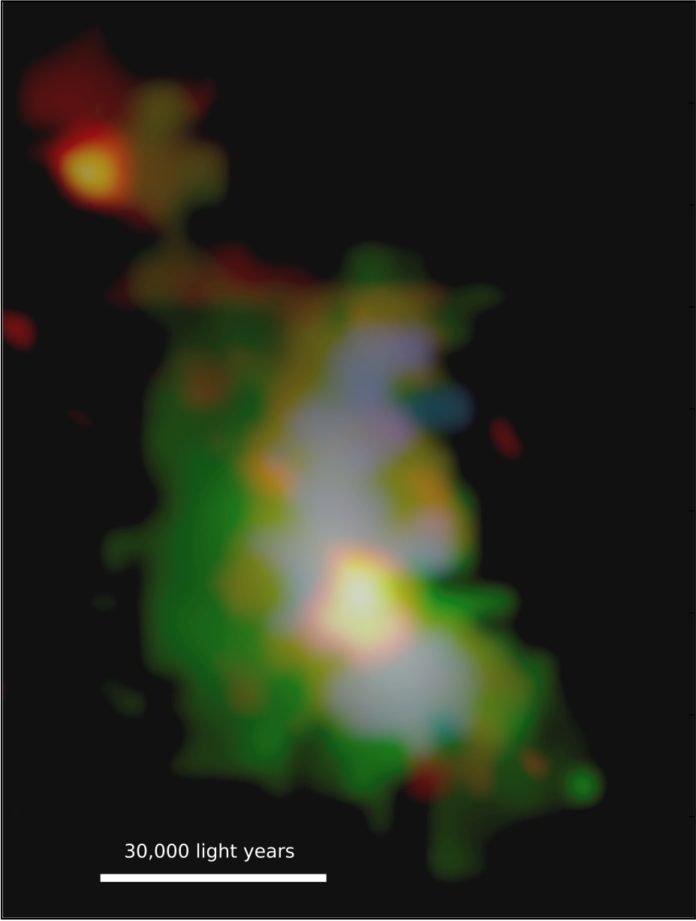Scientists at the University of California San Diego have shed light on the formation of supermassive black holes and galaxies by highlighting the physics surrounding the formation of black holes and galaxies, improving scientific understanding of how the two grow in unison.
Professor Shelley Wright, research lead, said, “Supermassive black holes are captivating. Understanding why and how galaxies are influenced by the supermassive black holes they harbor is an outstanding puzzle in their formation.”
These brilliant, overwhelming, supermassive black holes are known as “quasars.” Scientists inspected the energetics encompassing the effective quasar-created winds. Their estimations put the far-off supermassive black hole and a cosmic system named 3C 298 at around 9.3 billion light-years away.
Wright said, “We study supermassive black holes in the very early universe when they are actively growing by accreting massive amounts of gaseous material. While black holes themselves do not emit light, the gaseous material they chew on is heated to extreme temperatures making them the most luminous objects in the universe.”
The research revealed that the winds blow out through the entire galaxy and impact the growth of stars. And this is striking that supermassive black holes can affect stars’ framing at such huge separations.
For the study, scientists utilized multiple state-of-the-art astronomical facilities. The first of these was the W. M. Keck Observatory instrument OSIRIS and its progressed versatile optics (AO) framework. An AO framework permits ground-based telescopes to accomplish higher quality pictures by redressing for the obscuring caused by Earth’s air.
The subsequent pictures are in the same class as those got from space. The second significant office was the Atacama Large Millimeter/submillimeter Array, known as “ALMA,” a global observatory in Chile that can distinguish millimeter wavelengths utilizing something like 66 receiving wires to accomplish high-determination pictures of the gas encompassing the quasar.
Graduate student Andrey Vayner said, “The most enjoyable part of researching this galaxy has been putting together all the data from different wavelengths and techniques. Each new dataset that we obtained on this galaxy answered one question and helped us put some of the pieces of the puzzle together. However, at the same time, it created new questions about the nature of galaxy and supermassive black hole formation.”
Neighboring galaxies show that the galaxy mass is tightly correlated with the supermassive black hole mass. Scientists indicate that 3C 298 does not fall within this normal scaling relationship between nearby galaxies and the supermassive black holes that lurk at their center.
In any case, in the early universe, the investigation demonstrates that the 3C 298 cosmic system is 100 times less gigantic than it ought to be given its behemoth supermassive black hole mass. This suggests the supermassive black hole mass is set up a long time before the cosmic system, and possibly the energetics from the quasar is fit for controlling the growth of the galaxy.
Wright said, “the data sets were “tremendously gorgeous” from both Keck Observatory and ALMA, offering a wealth of new information about the universe.”
Their findings were published in the Dec. 20, 2017, issue of Astrophysical Journal.
